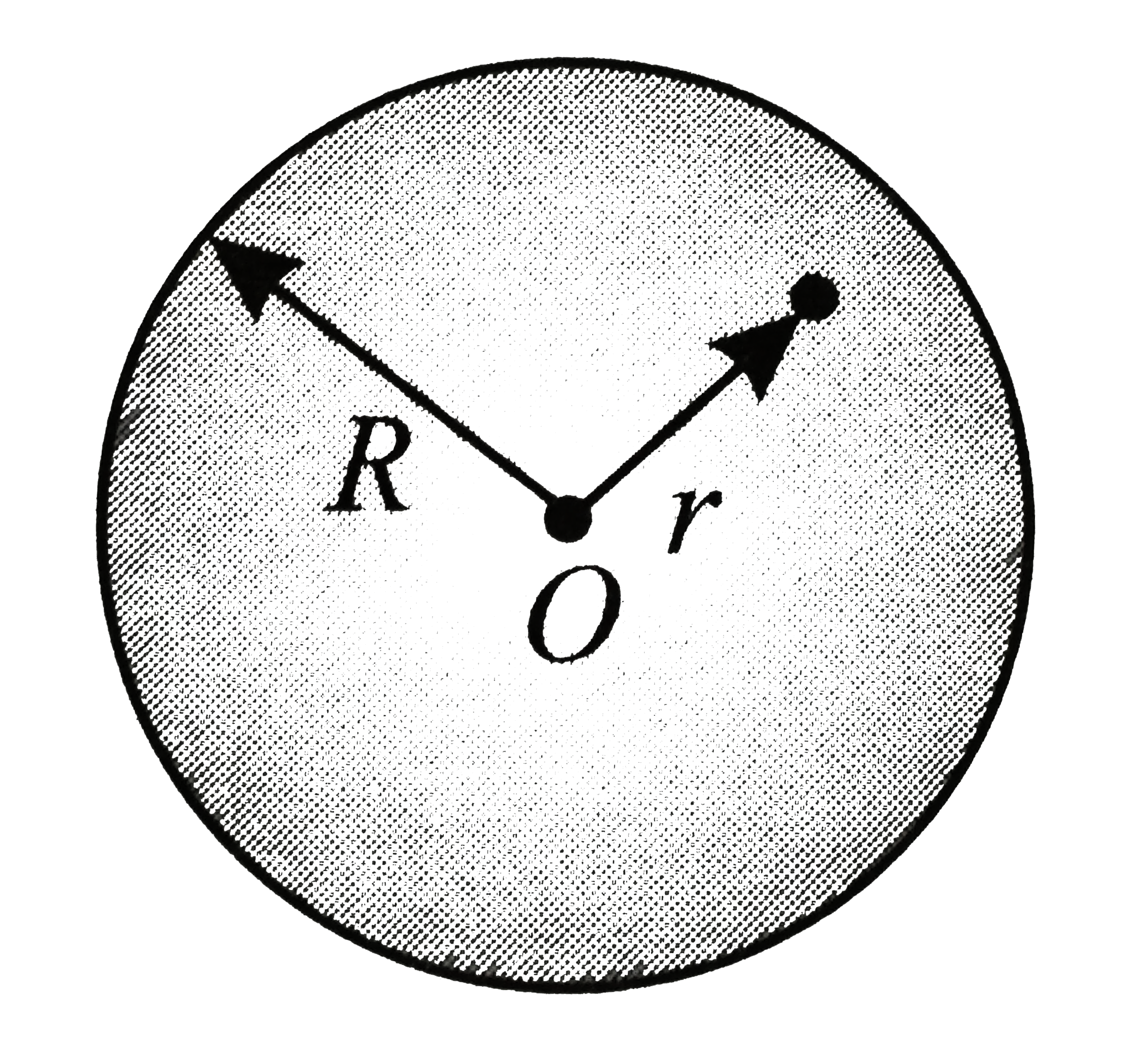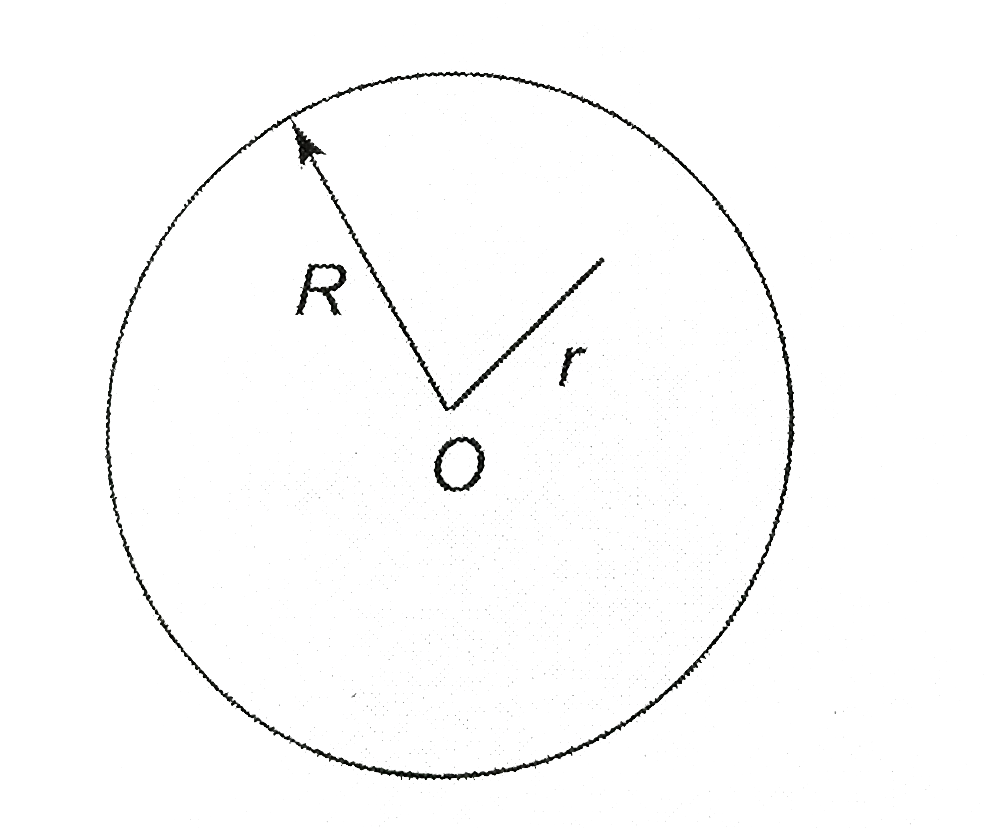from the relation R=R0A1/3, where R0 is a constant and A is the mass number of a nucleus, show that the nuclear matter density is nearly constant (i.e., independent of A ).
To show that the nuclear matter density is nearly constant and independent of the mass number A, we start with the given relation:
R=R0A1/3
where R0 is a constant and A is the mass number of the nucleus.
Step 1: Understand the formula for density
The density ρ of a nucleus can be defined as the mass per unit volume. The mass of the nucleus is given by its mass number A, and the volume V of the nucleus can be expressed in terms of its radius R.
Step 2: Express the volume of the nucleus
The volume V of a nucleus (assuming it is spherical) is given by the formula:
V=43πR3
Step 3: Substitute the expression for R
Substituting the expression for R into the volume formula, we have:
V=43π(R0A1/3)3
Step 4: Simplify the volume expression
Now, simplify the expression for the volume:
V=43πR30A
Step 5: Write the density formula
Now we can express the density ρ as:
ρ=massvolume=AV
Substituting the volume we found:
ρ=A43πR30A
Step 6: Cancel A from the density expression
Notice that A in the numerator and denominator cancels out:
ρ=34πR30
Step 7: Conclusion
The expression ρ=34πR30 shows that the density ρ is a constant value, as it does not depend on A. Therefore, we conclude that the nuclear matter density is nearly constant and independent of the mass number A.
The density ρ of a nucleus can be defined as the mass per unit volume. The mass of the nucleus is given by its mass number A, and the volume V of the nucleus can be expressed in terms of its radius R.
The volume V of a nucleus (assuming it is spherical) is given by the formula:
Substituting the expression for R into the volume formula, we have:
Now, simplify the expression for the volume:
Now we can express the density ρ as:
Notice that A in the numerator and denominator cancels out:
The expression ρ=34πR30 shows that the density ρ is a constant value, as it does not depend on A. Therefore, we conclude that the nuclear matter density is nearly constant and independent of the mass number A.
Topper's Solved these Questions
- NUCLEIBOOK - NCERT ENGLISHCHAPTER - NUCLEIEXERCISE - Exercise
31 Videos
- MOVING CHARGES AND MANGNETISM BOOK - NCERT ENGLISHCHAPTER - MOVING CHARGES AND MANGNETISM EXERCISE - Exercise
28 Videos
- RAY OPTICS AND OPTICAL INSTRUMENTSBOOK - NCERT ENGLISHCHAPTER - RAY OPTICS AND OPTICAL INSTRUMENTSEXERCISE - Exercise
32 Videos
Similar Questions
Radius of a nucleus is given by the relation R=R0A1/3 where R0=1.3×10−15m and A is mass number. For a nucleon inside a nucleus, de-Broglie wavelength is given by diameter of the nucleus. Average kinetic energy of a nucleon in the Te128 nucleus based on above information will be :
View SolutionThe graph between log R and log A where R is the nuclear radius and A is the mass number is.
View SolutionThe graph of 1n(RR0) versus 1nA(R=radius of a nucleus and A= its mass number) is
View SolutionHow is the size of nucleus experimentally determined ? Write the relation between the radius and mass number of the nucleus. Show that the density of nucleus is independent of its mass number.
View SolutionA ball of radius R carries a positive charges whose volume density at a point is given as ρ=ρ0(1−r/R), Where ρ0 is a constant and r is the distance of the point from the center. Assume the permittivities of the ball and the enviroment to be equal to unity.
(a) Find the magnitude of the electric field strength as a function of the distance r both inside and outside the ball.
(b) Find the maximum intensity Emax and the corresponding distance rm.
View SolutionA solid insulating sphere of radius R has a nonuniform charge density that varies with r according to the expression ρ=Ar2, where A is a constant and r<R is measured from the centre of the sphere. Show that (a) the magnitude of the electric field outside (r>R) the sphere is E=AR5/5ε0r2 and (b) the magnitude of the electric field inside (r<R) the sphere is E=Ar3/5ε0.

View SolutionA non-conducting solid sphere has volume charge density that varies as ρ=ρ0 r, where ρ0 is a constant and r is distance from centre. Find out electric field intensities at following positions.
(i) r<R (ii) r≥R
View SolutionA solid non conducting sphere of radius R has a non-uniform charge distribution of volume charge density, ρ=ρ0rR, where ρ0 is a constant and r is the distance from the centre of the sphere. Show that : (i) the total charge on the sphere is Q=πρ0R3 (ii) the electric field inside the sphere has a magnitude given by, E=KQr2R4
View Solution(i) What characteristic property of nuclear force explains the constancy of binding energy per nucleon (BE/A) in the range of mass number 'A' lying 30<A<170 ?
(ii) Show that the density of nucleus over a wide range of nuclei is constant-independent of mass number A.
View SolutionA cyclist rides along the circumference of a circular horizontal plane of radius R, with the friction coefficient μ=μ0(1−rR), where μ0 is constant and r is distance from centre of plane O. Find the radius of the circle along which the cyclist can ride with the maximum velocity, what is this valocity?

View Solution
